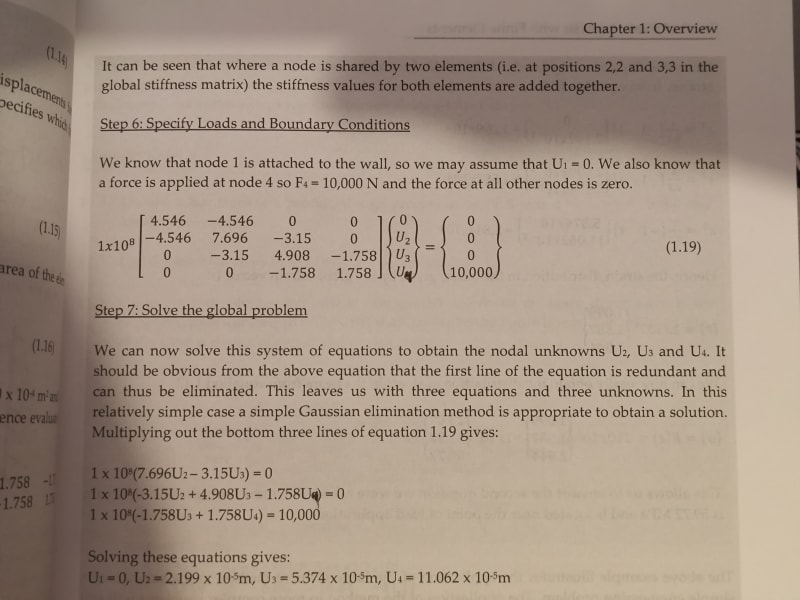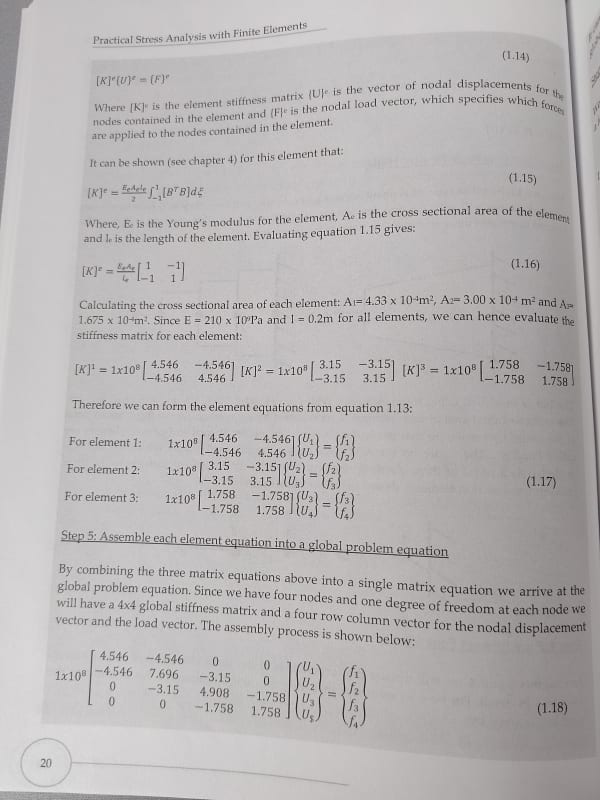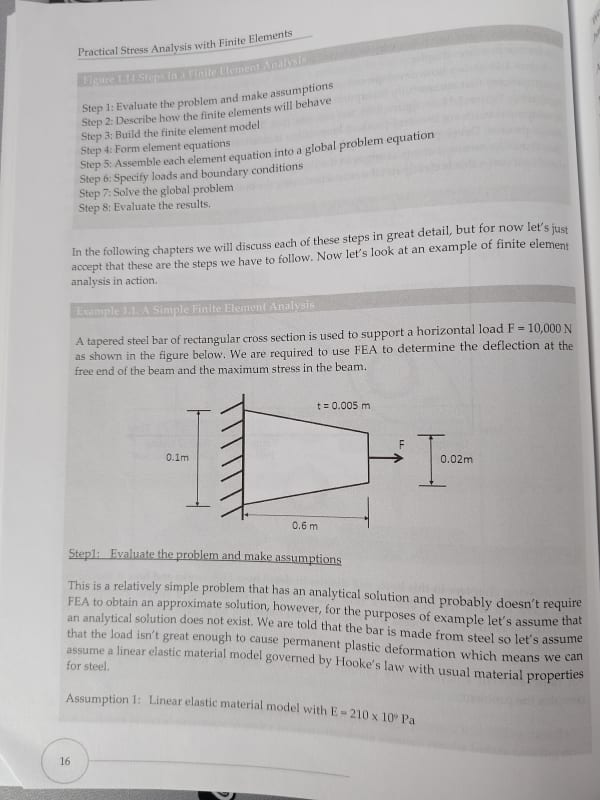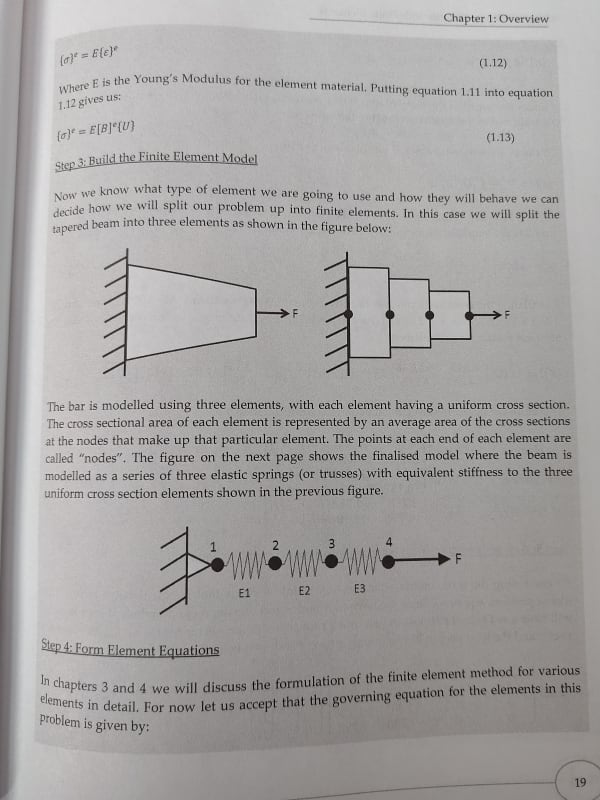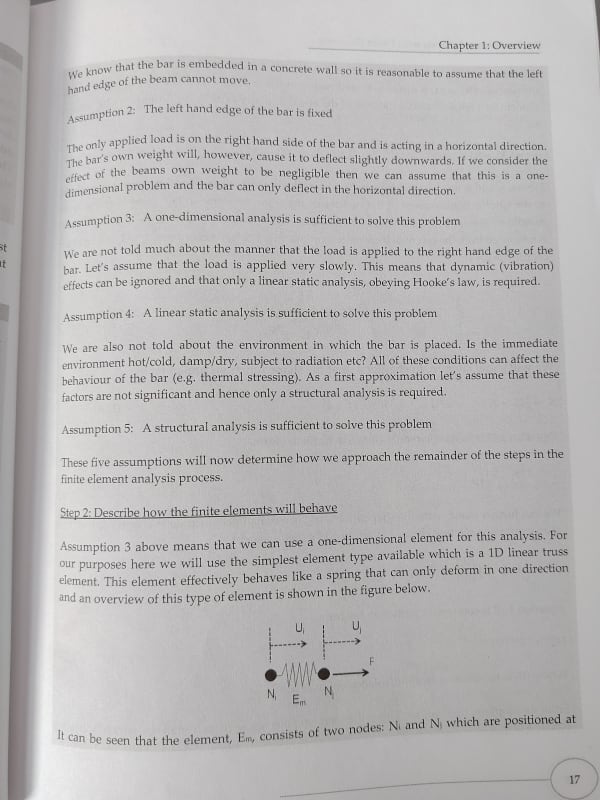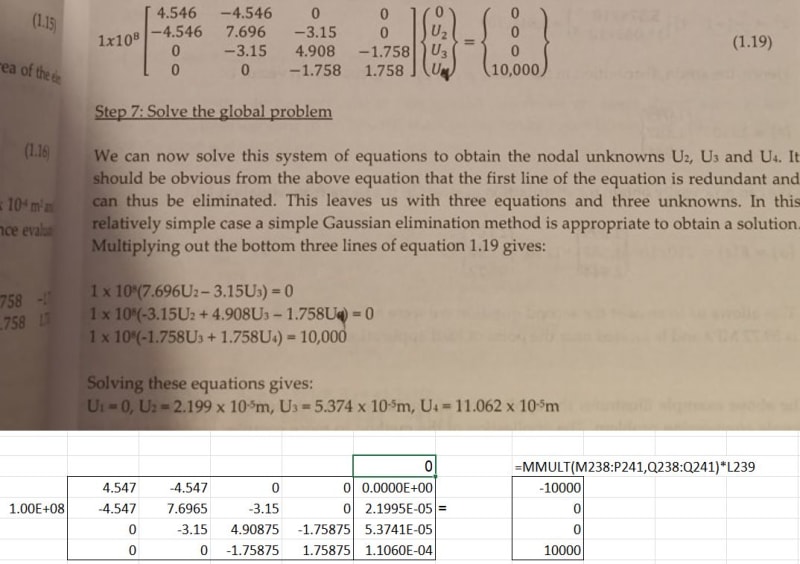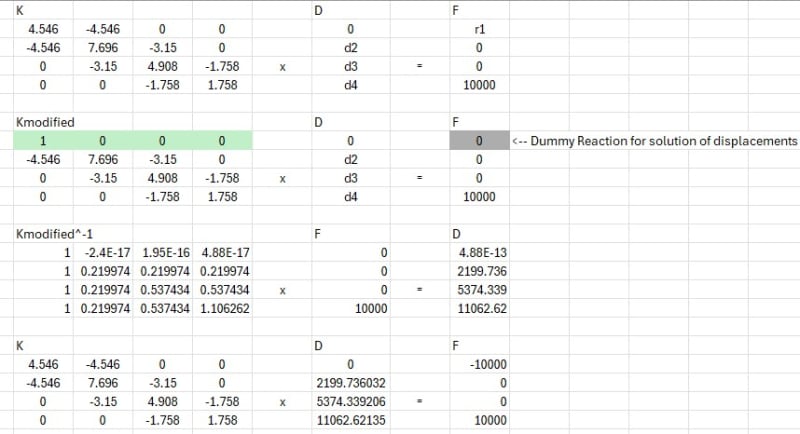the general solution is the full 4 rows ... [k]*d = F
then fill in the known parts of the solution ... d(1) = 0, F(1) = -10000, F(4) = 10000
then solve for d(2), d(3), and d(4).
Reducing the 4x4 matrix to a 3x3 seems to give the right answer (although as noted above, it doesn't give a complete solution for 4 variables), but it overlooks the point you made to my initial post, "what about k(1,2)*d(2)=F(1) ?" which is the missing piece of the puzzle (and it seems that the right solution has this "baked" in).
I don't think the text is Wrong, but is somewhat torturous in it's logic, and missing explanation, and obfuscating a very simple problem. Missing that F(1) is -10000 is basic ... and I don't think you need it to solve d(2), d(3), d(4) (as the 3x3 matrix shows) so you can have F(1) = F(1) (an unknown force) initially and solve k(1,2)*d(2) = F(1) to finish the problem. This is how FEA codes work ... they reorder the equations (the rows of the matrix) so that the reactions (with zero displacements) are together and then they solve the rest of the structure (the 3x3 in this case), and then they solve the reactions (ie k(1,2)*d(2) = F(1)). In this case we can look at the problem and say F(1) = -10000 but in a general problem we can't (or not as easily). IMHO this is a better way to present the solution of this problem, more closely following the general FEA method, without inserting data we know. As you observed, in this simple problem we know F(1) = -10000, and this tells us what d(2) is so only d(3) and d(4) need to be found. More generally we don't know F(1) so it should be a variable, we know d(1) is 0 and F(4) = 10000 (and F(2) and F(3) = 0) and we can use the 4x4 matrix to determine the unknowns ... d(2), d(3), d(4), F(1) ... 4 equations, 4 unknowns.
"Hoffen wir mal, dass alles gut geht !"
General Paulus, Nov 1942, outside Stalingrad after the launch of Operation Uranus.
